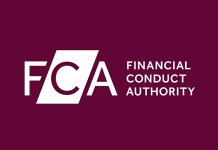Green bonds have become popular in recent years but the lack of transparency over how proceeds are invested has made some investors nervous. This is why regulators such as the European Commission are expected to impose stricter requirements on issuers to limit the launch of low-quality green bonds.
The Commission is looking to increase disclosure demands on bond and stock issuers, while also helping investors obtain data on corporate activities that were previously not available.
Industry reports show that the volume of green bonds issued this year has already exceeded $100 bn and the trajectory is upwards as Germany, Spain, Italy and Sweden have all announced their intentions to join the pool of sovereign issuers in the second half of the year.
However, fears over “greenwashing” have dogged the sector since its inception. There are concerns over the issuer’s green credentials and whether the money raised is being deployed for sustainable friendly purposes.
Take the recent BBVA €1bn green hybrid Tier 1 bond. It offered a 6% coupon and was earmarked to fund a €2.9bn portfolio of “eligible green assets.” However, instead of going to fund environmental projects, the bank said it the proceeds “may be used” to repay an existing AT1 bond next year.

According to a recent note from Fitch Ratings, banks use the proceeds of green bonds to invest in sustainable assets but regulators could, in a stress scenario, force the bonds to absorb losses and write-downs on all assets, including non-green assets. “This raises questions about the feasibility of ring-fencing sustainable asset and liabilities, and the potential clash between sustainability objectives and prudential regulation of banks,” the ratings agency said.
Fitch adds that tracking the usage of green bond proceeds is already difficult given the fungible nature of cash and the loose labelling that many banks use to reference sustainable and green projects. The structure of green AT1 adds complexity as there is no regulation or market precedent (beyond creditor hierarchy) for how the use of proceeds would be tracked if the instrument is required to absorb losses
Currently, there are voluntary guidelines such as the International Capital Market Association’s Green Bond Principles (GBP) and the Climate Bonds Initiative’s Climate Bonds Standard and Certification Scheme to provide certification and credentials to green bonds by specifying eligibility criteria for projects to be financed by green bonds alongside providing a climate bonds taxonomy.
©TheDESK 2020
©Markets Media Europe 2025












